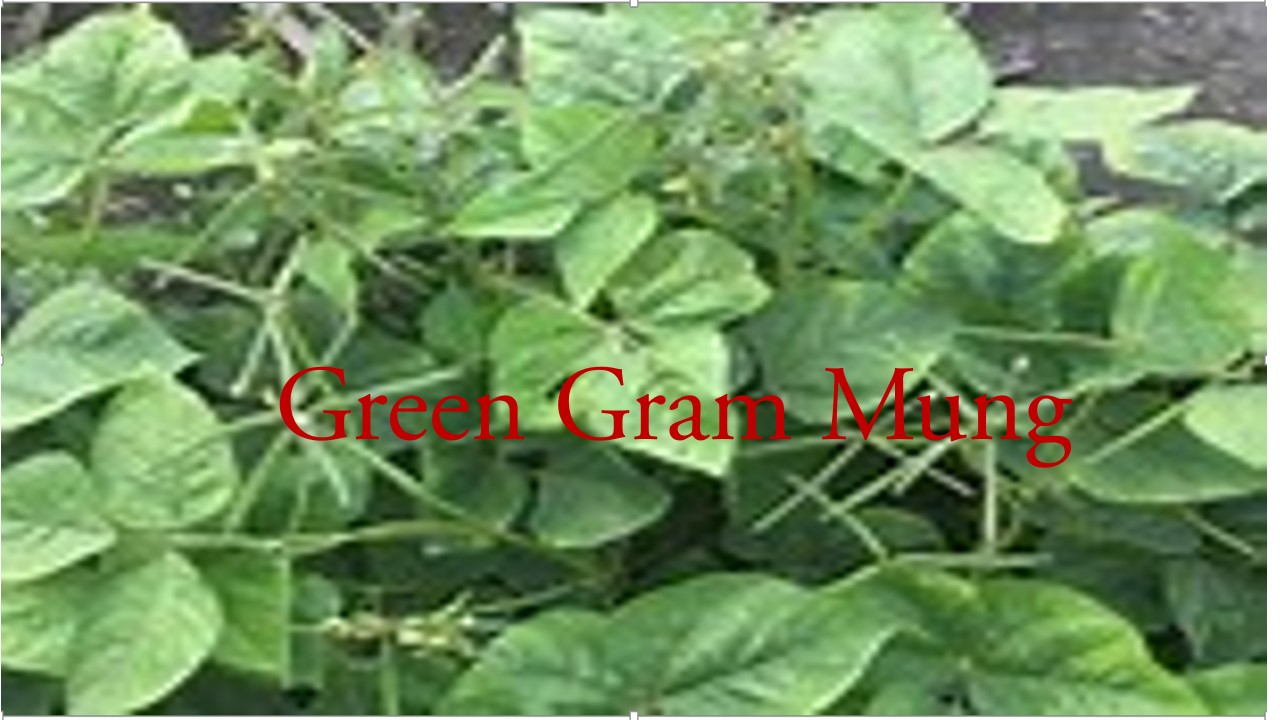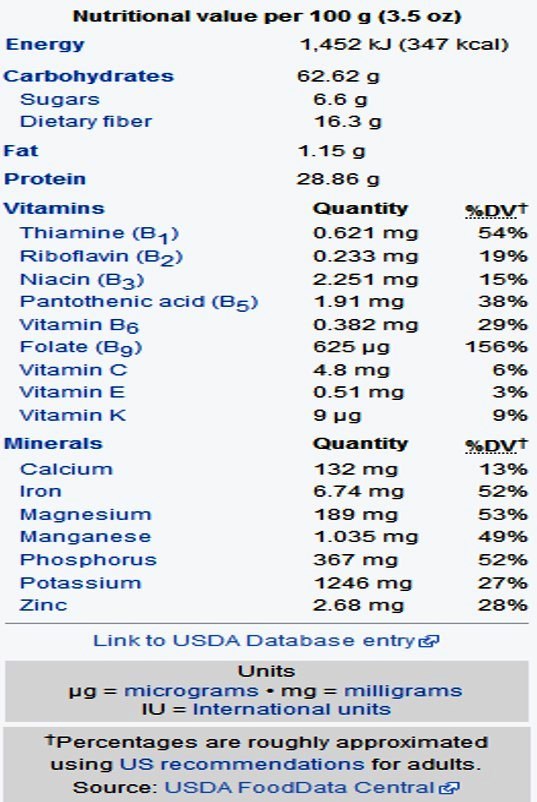INTRODUCTION

Green Gram Mung is an annual vine with yellow flowers and fuzzy brown pods.
The English word mung originated (and used as is) from the Hindi word मूंग (“moong”), which is derived from the Sanskrit word मुद्ग (“mudga”).
Green Gram Mung belongs to Vigna Radiata family Leguminoseae. It is one of the most important pulse crops. The This crop was domesticated in India, where its progenitor (Vigna radiata subspecies sublobata) occurs wild.
Mung is cultivated in India, Myanmar, Sri Lanka, Pakistan, China, Fiji, Queens land and Africa, Russia, Kazakistan and other many places.
Carbonized Green Gram Mungs have been discovered in many archeological sites in India dating back more than 4,000 years. Some scholars hold that two separate domestications of Mung happened in the northwest and south of India. By about 3500 years ago Green Gram Mungs were widely cultivated throughout India.
Cultivated Mungs later spread from India to China and Southeast Asia. Archaeobotanical research at the site of Khao Sam Kaeo in southern Thailand indicates that Green Gram Mungs had arrived in Thailand by at least 2,200 years ago.
Area and Distribution:
Green Gram Mung is cultivated in the countries of India, Burma, Srilanka, Pakistan, China, Fiji, Queens land and Africa. India is the major producer in the world and it is grown in almost all the states. The important growing States in the country are Orissa, Maharashtra, Andhra Pradesh, Madhya Pradesh, Gujarat, Rajasthan and Bihar.

Mung Beans
Sowing Green Gram Mung Crop
When to sow
Green Gram Mung is primarily a crop of rainy season; however, with the development of early maturing varieties, it has proved to be an ideal crop for spring and summer seasons as well. It is grown in all the three seasons in the country.
Summer season, from about middle of March to last week of June, is most suitable as there are plenty of sunshine periods. During this period high temperature and low humidity keep insects and disease infestations at their lowest.
In North India, it is cultivated in both kharif(2) and summer seasons. In South India, it is cultivated in Rabi(1) season.
Climatic requirement
Green Gram Mung is best suited to areas having an annual rainfall of 60 to 75 cm. It requires a hot and warm climate. Mung is considered to be hardiest among all pulse crops and can tolerate drought to a great extent. Hence, it is successfully grown in any adverse conditions and particularly in drought prone areas during kharif season. Water logging and cloudy weather are harmful for the crop.
Soil Requirements for Green Gram Mung
Green Gram Mung can be grown on a variety of soils ranging from sandy loam to black cotton soils having good drainage capacity. The crop is very sensitive to water logging conditions.
Land Preparation
Prepare field by one or two ploughing followed by two or three cross harrowing and planking. The field should be well leveled and free from weeds and stubbles. For summer season crop, pre-sowing irrigation should be given immediately after harvesting of the previous crop. Field should be leveled to minimize the loss of moisture by evaporation from the soil.
Fertilizer Application for Green Gram Mung
10 to 12 t/ha and well decomposed FYM should be incorporated into soil at the time of preparation of the land. Apply 20 kg/ha N, 40 kg/ha Phosphate, 25 kg/ha Potash in summer crops in irrigated land. Application may be half in rain fed areas. Apply zinc and sulphur.
A word of advice — It is always advisable to have a soil water analysis done for deciding on actual quantity of application of inorganic fertilizers to avoid wastage.
Do this Also – seed treatment
Before sowing, seeds should be treated with Thiram or Captan @ 2 to 3 g/kg of seeds.
Mix the seeds in 10% cooled gur (jaggery) solution mixed with Rhizobium biofertilizer(3) @ 20-30 g/kg. Dry for 6-8 hr in shade and sow the seeds within 12 hrs.
Seed Spacing
Seeds are spaced at 45 cm x 10 cm for kharif crop and at 30 cm x 10 cm for Rabi and summer.
Seed Rate:
Use about 12 to 16 kg/ha in kharif season and 20-25 kg/ha Rabi and summer seasons. Seeds should be sown at a depth of 5-7 cm.
Seed sowing is either (a) Manual (Broadcasting, Line Sowing) or (b) Mechanical (Seed drill).
Irrigation required by Green Gram Mung
For rain fed crop, irrigation is not needed but drainage is very important because this crop is crop is very much sensitive to water logging.
For summer season crop, five to six irrigations may be given. First irrigation should be given at 20-25 DAS and subsequent irrigations should be given at an interval of 12-15 days.
Irrigation should not be given at full bloom stage of the crop. Late flowering and early pod filling stages are critical stages for irrigation.
Weed Control in Green Gram Mung Farming
One or two inter-culturing and one to two weeding should be carried out at 20 and 45 days after sowing. Weedicide chemicals like Glyphosate 800 ml per acre, Fluchloralin or Pendimethalin @ 0.5 kg/ha or oxadiazon @ 0.25 kg/ha as pre-emergence may be applied when hand weeding is not possible due to continuous rains during kharif.
Methods of cropping
Early maturing varieties mature in 60-70 days and they can be fitted between kharif and Rabi season crops. Green Gram Mung is taken with cotton as inter crop in Saurashtra region during kharif season. It is also grown as mixed crop with pearl millet, sorghum, maize and cotton. It is taken in a crop sequence of sorghum-wheat-Green Gram Mung, sorghum-potato-Green Gram Mung or pearl millet-wheat-Green Gram Mung.
Other sequences of cropping are with wheat, rice, sugarcane and maize. e.g. *Green Gram Mung– maize – wheat, *Green Gram Mung– rice – wheat, *Green Gram Mung– maize – toria – wheat, *Green Gram Mung– maize – potato – wheat. It is also being grown as intercrop in fruit crops like mango, citrus etc. when they are young.
Pests and Diseases Control
Sucking Pest, Mites, Beetles, Borer, Caterpillars are some pests and diseases which affect this crop. The control measures depend upon type and intensity of the problems and also whether organic or inorganic pesticides are to be used as decided by the Farmer. For more information on pests and diseases please go through my blog on same.
Nutritional Value of Green Gram Mung

Approximate Yield
600 -700 kg/ha in Kharif season and around 1100 -1300 kg/ha in summer season.
Uses
- This pulse is an excellent source of high quality protein. It is consumed in different ways as dal, halwa, snack and so many other preparations. Ascorbic acid (Vitamin C) is synthesized in sprouted seeds of this pulse with increment in riboflavin and thiamine.
- Prolific use in cuisines of India, east Asia, southeast Asia, Middle East and many other countries as paste, dal, sprouts and various innovative ways.
- Being a short duration crop it also provides an excellent green fodder to the animals. It is a leguminous crop. It has the capacity to fix atmospheric nitrogen through symbiotic nitrogen fixation. It is also used as green manure crop.
- Moong fits well in various multiple and intercropping systems. After picking of pods, the plants may be used as fodder or can be incorporated as manure.
When to Harvest Green Gram Mung
Green Gram Mung can be harvested at 55 to 60 days after planting, yellow variety at 70-75 days whereas red variety at 80-90 days. Fruits can be harvested once in 3 to 4 days. Yellow and red fruits can be harvested when they have gained 50-80 per cent of the color development.
Early morning hours are best suited for harvest. After harvest fruits should be kept in cool place and avoid direct exposure to sunlight.
Harvesting before the maturity of crop, usually result in lower yields, while delayed harvesting results in shattering of pods and other losses caused by pests. Harvesting during rains and overcast weather invitation to fungal infection.
References: https://en.wikipedia.org/wiki/Mung_bean
- Rabi crop: Rabi cropping season is from October-March (winter)
- Kharif crop: Kharif cropping season is from July –October during south-west monsoon in India.
- Rhizobium: bacteria associated with the formation of root nodules on plants. These bacteria live in symbiosis with legumes. They take in nitrogen from the atmosphere and pass it on to the plant, allowing it to grow in soil low in nitrogen.
Ok
Excellent information about mung is provided by you. Thanks🌹 you